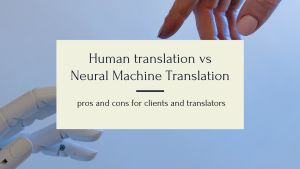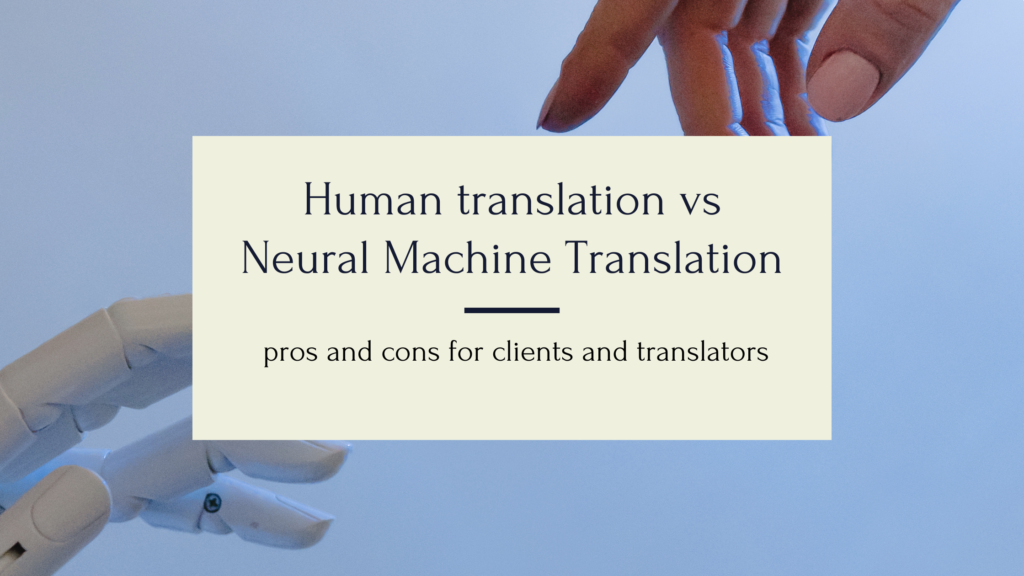
Human translation vs Neural Machine Translation: pros and cons for clients and translators

Machine translation (MT) – “the application of computers to the task of translating texts from one natural language to another” (European Association for Machine Translation) – has been used for decades, but only recently has it been based on a deep-learning approach called “neural machine translation”. And only recently have translators really started panicking.
But are robots going to make translators obsolete? The consensus seems to be that this certainly won’t happen in the short term and may never happen at all.
The cons of using neural machine translation
There are still major, “objective” issues with neural machine translation. Such issues relate to disambiguating words according to context, translating non-standard speech, and identifying (and not translating) proper nouns. And then there are the equally vital, “subjective” issues relating to the translation of culture, tone, and other, more sensitive elements of language.
Despite these issues, however, it seems inevitable that machine translation will only be used more and more widely. Especially as it becomes more and more accurate.
Human translation vs neural machine translation
But does that mean that humans will be rendered superfluous to the process of translation? For now, human translators are still vital when it comes to identifying the “objective” issues mentioned above (and fixing them) but also in treating “subjective” issues. These include ensuring cultural elements are appropriately translated and massaging the tone of a piece so that it reflects that of the original text. This is what is commonly called MTPE (Machine Translation Post-Editing).
For a translator, the idea of being relegated to this kind of work – simply editing what a machine has produced automatically – can be dispiriting. It seems natural to want to have autonomy over your work. Moreover the adverse removal of such autonomy can often be exacerbated by the fact that translators undertake this work under imperfect conditions: deadlines that are too tight; pay that is too low.
Benefits to machine-aided translation
As with so many cases of integrating new technology into human society, the problem isn’t inherent to the technology but to our relationship to that technology. In fact, there are great benefits to machine-aided translation – apart from the obvious ones, such as increased productivity – and not just for clients.
Ideally, MT could be relied upon to provide a reasonably accurate, if excessively literal, translation of a text that the human translator is then able to polish, focusing on the subtler, more difficult, often more creative aspects of translation. In other words, MT can be deployed to accomplish the more repetitive and formulaic work, while the human translator is freed up to concentrate on the more rewarding aspects of translation (and ensuring that the MT doesn’t incorporate objective errors).
Win-win conclusion
It is vital that the translator be given sufficient time and adequate remuneration to make MTPE work feasible and, equally importantly, gratifying. But, in such conditions, all parties can reap real benefits from machine translation.
What’s your experience with machine translation been like? Leave a comment below.


Leave a comment: